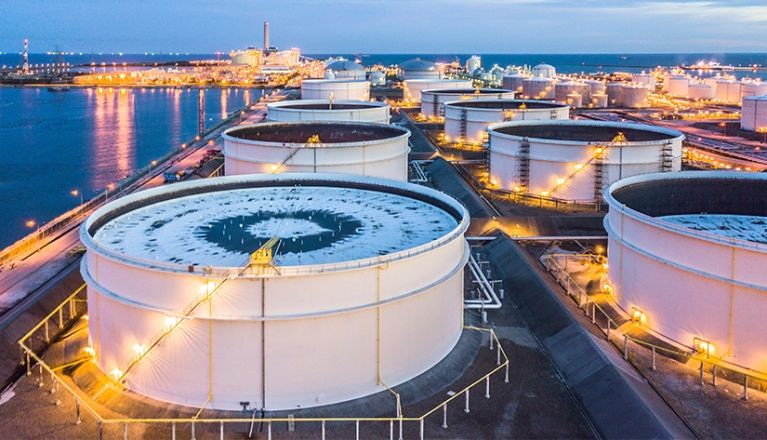-
View article
 #Economy
#EconomySouth Korea: a year after the political crisis, markets are buying the promise of stability
2025/12/17
- #Eco-trends
- 2020/01/14
- 0
-
9
Iran/US conflict and oil prices: a fool's game?

Following the targeted killing by the United States of Iranian General Qasem Soleimani, the Middle East (which supplies one third of the world’s oil) is once again in the spotlight. Iran retaliated with a missile strike on military bases in Iraq, though without hitting any oil facilities or causing any US losses. Recent comments from Donald Trump following the Iranian attack suggest an easing of tensions between the two “belligerent” countries, though this will no doubt only last until the next crisis… If tensions were to mount in the near future, should the world fear a shortage in the supply of oil? As things currently stand, there are two potential scenarios: Iran could deliberately attack oil facilities in the region and use oil as a weapon against the United States; or a supply shortage could arise as collateral damage from uprisings orchestrated by Iran in the region.
An attack on oil infrastructure in the Persian Gulf sparking a surge in oil prices and affecting the spending power of the US middle class in a presidential election year could be a tempting prospect. It would also give Iran – which is still managing to export around 200,000 barrels of oil a day – a slight revenue boost. However, such an attack could prove risky, and might have only a short-lived impact on oil prices. Other than Iran, the big oil-producing countries in the Persian Gulf are Saudi Arabia, Iraq, the United Arab Emirates (UAE), Kuwait and Oman. Knocking out oil facilities in the UAE or Kuwait, without touching Saudi capacity, would be tactically ineffective: Saudi Arabia’s spare capacity could offset some or all of any lost production. While destroying Saudi oil facilities would undeniably have a bigger impact on supply, oil prices and regional stock markets, organising such an attack would be both difficult and risky.
Following last September’s attack on a Saudi site, it is reasonable to suppose that critical Saudi facilities are monitored and protected. And Iran no longer has the element of surprise on its side. That attack also highlighted Saudi Arabia’s ability to quickly restore lost capacity, at least in part; any fresh attack could well end similarly. Furthermore, it can reasonably be assumed that any military attack on Saudi facilities claimed by Iran would trigger a retaliatory hail of US missiles on Iran.
Iran could once again threaten to block the Strait of Hormuz. Even setting aside the technical feasibility of such an operation in this strategic strait, it seems unlikely that Iran would follow through on any such threat. Indeed, Iran has issued such threats on a number of occasions (in the 1980s during the Iran-Iraq war, in the early 2010s and more recently) without carrying them through. While technically feasible, completely blocking the Strait of Hormuz would be less bothersome to the United States than to other big oil-consuming countries like China, a permanent member of the UN Security Council, with Russia not vehemently opposed to the Iranian regime. Furthermore, thanks to the development of shale oil, the United States is less reliant on oil imports from the Gulf and less vulnerable to turmoil in the Middle East. Lastly, an Iranian naval blockade of this kind would very probably give American hawks just the excuse they’ve been waiting for to launch a large-scale military operation against a country seen as part of the “Axis of Evil”.
However, Iran is likely to continue to do what it does best: foment proxy guerrilla warfare in Iraq and Yemen using loyal local militias. Such a strategy will force the United States to put more boots on the ground in the Middle East and trigger an exodus of expats working for foreign oil companies, probably affecting Iraqi oil production. Chevron and CNPC (China’s national oil company) have already announced that they are pulling out their expat workers from Iraq. However, Iran will have to show restraint if it is to avoid sparking an overreaction from a US president made even more trigger-happy by the prospect of imminent re-election.
So there are two potential scenarios. Our base case assumes that the geopolitical risk premium on oil prices will gradually decrease. With tensions easing, and assuming no significant military action against oil facilities, oil prices will mainly depend on supply and demand. There is still the risk of a bearish trend if global economic growth should run out of steam in 2020, leading us to assume an average price of $62 a barrel in 2020 (and $56 a barrel in 2021).
Our less likely alternative scenario assumes a significant Middle East oil shortage in early 2020, triggering a surge in oil prices over the first three quarters of the year. Such a surge would boost US drilling activity, as it did in 2018. This upturn in activity would increase the supply of oil, causing oil prices to correct in 2021 as they did in the fourth quarter of 2018. This scenario yields an average price of $79 a barrel in 2020 (and $58 a barrel in 2021).
Stéphane Ferdrin - stephane.ferdrin@credit-agricole-sa.fr








